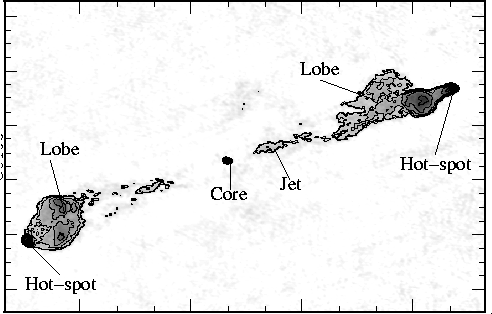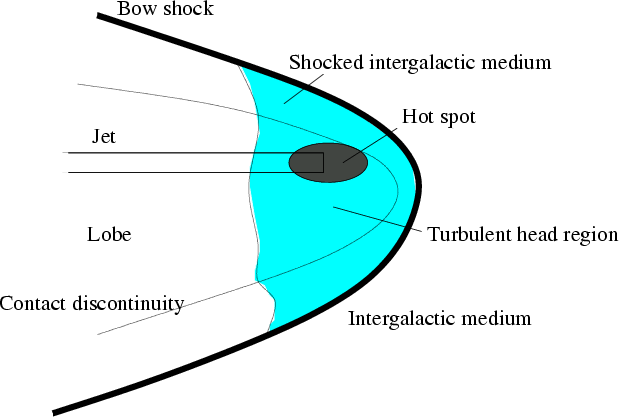Latest News
20-05-2008 - Grand opening of the "Optical Jets in Radio Galaxies" Web Site
Scientific background
Jets and hot spots are regions of enhanced radio emission usually associated with radio galaxies (Fig. 1).

Fig. 1: Example of a radio source
Relativistic particles generated in the central active galactic nucleus are channeled through the jets towards the outer regions of the radio galaxy, the hot-spots, where they impact with the Intracluster medium (ICM). Here, electron populations are reaccelerated by means of shocks and turbulence caused by the jet-ICM interaction (Fig. 2).

Fig. 2: Model of a jet-ICM interaction
Detection of optical emission from hot-spots is not a common phenomenon, due to strong energy losses caused by synchrotron radiation. The lifetime of relativistic particles (tage) emitting at such high energies is rather short, depending on the magnetic field (B):
where ν is the break frequency of the electron radiation: the higher the break frequency, the shorter the electrons lifetime is.
However, in presence of low magnetic fields the lifetime of electron populations is expected to be much longer. We find that, low radio-power hot-spots are characterized by very low values of the magnetic field (e.g. < 10 nT).
In presence of such magnetic fields, electron populations emitting in optical can survive for thousands of years, instead of hundreds or even less as in high-radio power hot-spots, making low-radio power hot-spots the ideal target to be investigated in optical.